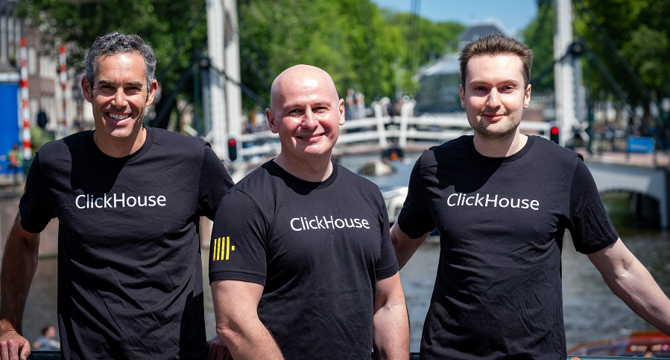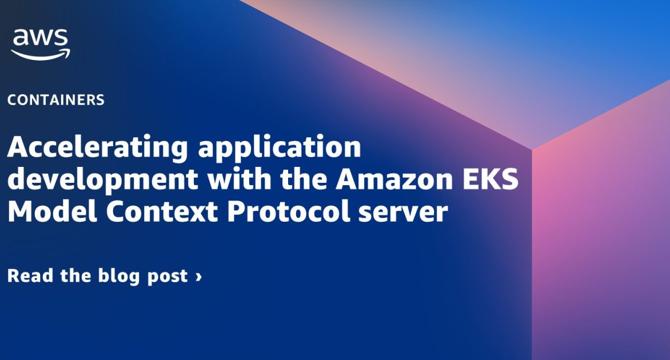Open Source News
Insider
48
Image Credit: Insider
Meta's chief AI scientist says all countries should contribute data to a shared open-source AI model
- Yann LeCun, Meta's chief AI scientist, advocates for open-source AI to be an international resource.
- He suggests that countries should not impede open-source platforms and instead support them to contribute to a shared AI model.
- LeCun envisions a distributed training approach across the world to create a repository of all human knowledge through open-source platforms.
- Both LeCun and OpenAI CEO Sam Altman emphasize the importance of international regulations in governing advanced AI systems to prevent global harm.
Read Full Article
2 Likes
Marktechpost
104

Yandex Releases Yambda: The World’s Largest Event Dataset to Accelerate Recommender Systems
- Yandex has released Yambda, the world’s largest publicly available dataset for recommender system research, containing nearly 5 billion anonymized user interaction events from Yandex Music.
- This dataset aims to bridge the gap between academia and industry, offering valuable behavioral data for developing recommender systems.
- Recommender systems rely on massive behavioral data to provide personalized experiences, but access to such large, anonymized datasets has been limited.
- Yambda addresses this challenge by offering 4.79 billion anonymized user interactions over a 10-month period, with features like audio embeddings and organic interaction flags.
- The dataset is provided in Apache Parquet format, making it accessible for researchers and developers using big data processing frameworks.
- Yandex introduces a Global Temporal Split evaluation strategy in Yambda, preserving temporal order for realistic testing of recommender models.
- Baseline models like MostPop, DecayPop, ItemKNN, and others are included for benchmarking and assessing the performance of new algorithms.
- Yambda's applicability extends beyond music streaming, serving as a benchmark for recommender systems in various domains like e-commerce and social networks.
- My Wave, Yandex Music's personalized recommender system, utilizes deep neural networks to offer tailored music suggestions based on user preferences.
- Yandex emphasizes privacy in the dataset by anonymizing user data and omitting sensitive attributes, ensuring ethical use of the data for research purposes.
Read Full Article
6 Likes
Hackernoon
289

Image Credit: Hackernoon
Open-Source AI Stacks for E-Commerce (2025 Guide)
- As e-commerce businesses scale, technical complexity increases, requiring better data, automation, and scalable systems to prevent bottlenecks.
- Off-the-shelf AI tools often lack flexibility and integration depth, making open-source AI stacks a cost-efficient, customizable alternative.
- Key operational areas like personalized recommendations and fraud detection can benefit from open-source AI tools for faster automation and control.
- Examples include LightFM for personalized recommendations, Implicit for high-performance recommendation systems, and Enthusiast for AI agents.
- Frameworks like Rasa enable the building of contextual chatbots, while tools like Facebook Prophet and Darts offer predictive analytics for sales and inventory.
- Automated content creation tools like LangChain and Text Generation Web UI aid in generating SEO-rich content and customizing content generation.
- For fraud detection and payment security, PyOD and Elastalert provide anomaly detection and real-time alerting capabilities.
- Visual search and image recognition can be enhanced using CLIP + Faiss Pipeline, while Metabase and dbt + DuckDB support advanced customer segmentation and analytics.
- A sample stack setup for tech leads includes various AI-powered tools for internal support, content agents, recommenders, forecasting engines, and more.
- Open-source AI tools empower e-commerce teams to overcome scaling challenges by providing control, speed, and flexibility for improved operations and innovation.
Read Full Article
17 Likes
Medium
398
Image Credit: Medium
My Journey into Linux: Why Every IT Student Should Try It
- The author shares their journey from using Windows to trying Linux as an IT student.
- They started with Ubuntu, a beginner-friendly Linux distribution, and found it to be a refreshing learning experience.
- Using Linux helped them gain a deeper understanding of computing concepts and command line operations.
- The author encourages IT students to explore Linux as it can enhance problem-solving skills and provide a sense of control and confidence.
Read Full Article
23 Likes
Discover more
- Programming News
- Software News
- Web Design
- Devops News
- Databases
- Cloud News
- Product Management News
- Operating Systems News
- Agile Methodology News
- Computer Engineering
- Startup News
- Cryptocurrency News
- Technology News
- Blockchain News
- Data Science News
- AR News
- Apple News
- Cyber Security News
- Leadership News
- Gaming News
- Automobiles News
Amazon
158

Image Credit: Amazon
Introducing AI on EKS: powering scalable AI workloads with Amazon EKS
- AI on EKS is an open source initiative by AWS to help deploy, scale, and optimize AI/ML workloads on Amazon EKS.
- It offers deployment-ready blueprints, IaC templates, benchmarks, and best practices for various AI tasks.
- AI on EKS is an extension of the Data on EKS initiative, dividing into AI on EKS and Data on EKS repositories.
- It provides solutions for deploying EKS clusters, reference architectures, model inference, distributed training, and more.
- The project structure includes sections for Infra and Blueprints, offering Terraform templates and prebuilt implementations.
- Users can deploy AI workloads using the provided blueprints with detailed instructions.
- AI on EKS addresses challenges like GPU infrastructure management, scaling efficiency, and tool integration.
- Contributions and feedback are encouraged, with ways to contribute like submitting issues or creating new blueprints.
- Next steps for getting started include visiting the AI on EKS website and exploring the GitHub repo.
- The project aims to simplify infrastructure setup, optimize resource usage, and facilitate AI/ML deployment on Kubernetes.
Read Full Article
9 Likes
Siliconangle
221

Image Credit: Siliconangle
ClickHouse reels in $350M for its high-speed columnar database
- ClickHouse Inc. has secured $350 million in a Series C funding round led by Khosla Ventures, bringing its total funding to over $650 million.
- ClickHouse's database, based on a columnar architecture, optimizes data retrieval by storing columns adjacent to each other for faster query processing.
- The database includes performance optimizations like vectorized query execution, range query simplification, and the ability to handle massive scales of data.
- ClickHouse plans to use the new capital to accelerate product development and expand its global presence, serving over 2,000 customers including major tech firms like Sony Corp. and Anthropic PBC.
Read Full Article
13 Likes
Amazon
421

Image Credit: Amazon
Automating AI-assisted container deployments with the Amazon ECS MCP Server
- Containerized applications have become the standard for modern cloud deployments, streamlining dependency management and scaling.
- To automate containerizing and deploying applications, Amazon introduces the Amazon ECS MCP Server.
- The Model Context Protocol (MCP) Server bridges AI assistance with Amazon ECS deployment best practices.
- The tools within the Amazon ECS MCP Server cover development, deployment, troubleshooting, operations, and decommissioning.
- Development tools assist in creating optimized Dockerfiles for efficient containerization.
- Deployment tools use CloudFormation for provisioning ECS environments and monitoring deployments.
- Troubleshooting tools like ecs_troubleshooting_tool diagnose issues across Amazon ECS components.
- Operations tools provide detailed information about ECS resources for better management.
- Decommissioning tools help in safely removing resources to prevent orphaned components.
- The Amazon ECS MCP Server enhances automation, interfaces directly with AWS services, and ensures security.
Read Full Article
25 Likes
Amazon
27

Image Credit: Amazon
Accelerating application development with the Amazon EKS MCP server
- The Model Context Protocol (MCP) server for Amazon EKS enables AI code assistants to interact with EKS clusters, providing tailored guidance and enhancing application development.
- MCP empowers Large Language Models (LLMs) to access external tools and data sources, enhancing their capabilities for AI-assisted development in Kubernetes environments.
- EKS MCP server offers tools for Kubernetes resource management, EKS cluster management, and troubleshooting, streamlining the application development lifecycle.
- By integrating the EKS MCP server, developers receive guided cluster creation, simplified deployment workflows, and faster issue resolution through AI code assistants.
- Tools like apply_yaml, manage_eks_stacks, and get_pod_logs are provided by the EKS MCP server for managing resources, troubleshooting, and interacting with EKS clusters.
- Through a walkthrough, the EKS MCP server demonstrates accelerated workload deployment on Amazon EKS, improving efficiency in cluster provisioning and application deployment.
- The EKS MCP server, along with AI code assistants like Cline, enhances the deployment and management of applications on EKS, making complex operations more efficient.
- For troubleshooting, the EKS MCP server aids AI assistants in diagnosing and resolving issues, such as troubleshooting pods and infrastructure on Amazon EKS clusters.
- Collaboration with AI code assistants and utilizing the EKS MCP server simplifies development tasks, offers contextual insights, and accelerates problem resolution in Kubernetes environments.
- The MCP server for Amazon EKS aims to make Kubernetes environments more accessible and manageable through AI-assisted guidance and troubleshooting capabilities.
Read Full Article
1 Like
VentureBeat
253

DeepSeek R1-0528 arrives in powerful open source challenge to OpenAI o3 and Google Gemini 2.5 Pro
- DeepSeek has released DeepSeek-R1-0528, an open source reasoning AI model that competes with proprietary models like OpenAI's o3 and Google Gemini 2.5 Pro.
- The update enhances performance on reasoning tasks in math, science, business, and programming and is available under the MIT License for commercial use.
- Existing users of DeepSeek API will have their model inferences updated to R1-0528 at no extra cost.
- Improvements in handling challenging reasoning tasks have been achieved through increased computational resources and algorithmic optimizations.
- DeepSeek-R1-0528 demonstrates improved accuracy in various benchmarks, such as AIME 2025 and LiveCodeBench datasets.
- The update introduces new features like JSON output support, reduced hallucination rate, and system prompts for streamlined deployment.
- A distilled version, DeepSeek-R1-0528-Qwen3-8B, aims to cater to those without high-end hardware requirements.
- The release has garnered positive feedback on social media, with users praising the model's coding capabilities and closeness to top performers like o3 and Gemini 2.5 Pro.
- DeepSeek continues to focus on delivering high-performing, open-source models that prioritize reasoning and usability, positioning DeepSeek-R1-0528 as a valuable tool for developers and researchers.
Read Full Article
15 Likes
Medium
285

Image Credit: Medium
Navigating the AI Licensing Labyrinth: Truly Open vs. Restricted "Open-Weight" Models
- The rise of Artificial Intelligence has led to a shift in development and usage of powerful tools, with a focus on 'openness' and licensing strategies.
- The article discusses the distinctions between terms like 'open-weight,' 'open-source,' and 'source-available,' emphasizing the importance of understanding licensing strategies in the AI landscape.
- It explains the traditional definition of 'open-source' according to the Open Source Initiative (OSI) and highlights licenses like the MIT and Apache 2.0 License.
- Various licensing strategies, such as 'open-weight,' 'source-available,' and Responsible AI Licenses (RAILs), are explored, showcasing the complexities and implications for AI innovation and ethical deployment.
Read Full Article
17 Likes
VentureBeat
140

Image Credit: VentureBeat
s3: The new RAG framework that trains search agents with minimal data
- s3 is an open-source framework introduced by researchers at the University of Illinois Urbana-Champaign to efficiently build retrieval-augmented generation (RAG) systems, benefiting developers creating real-world large language model (LLM) applications.
- The s3 framework separates the retriever (searcher) from the generator, training a search agent independently to improve retrieval quality without impacting the final answer generated by the LLM.
- s3 introduces the Gain Beyond RAG (GBR) reward signal to incentivize the searcher to find documents that enhance the generator's output quality, leading to better performance compared to static and end-to-end tuned baselines.
- The model-agnostic approach of s3 allows for strong gains in data efficiency, achieving notable results with minimal training examples, making it practical and cost-effective for enterprises with limited resources.
Read Full Article
8 Likes
Bitcoinmagazine
72

Human Rights Foundation Donates 800 Million Satoshis To 22 Worldwide Bitcoin And Freedom Projects
- The Human Rights Foundation (HRF) recently granted 800 million satoshis (8 BTC), valued at over $874,000, to 22 Bitcoin and freedom projects globally.
- The grants focus on open-source development, educational initiatives, Bitcoin mining decentralization, and privacy tools for human rights advocates in authoritarian regimes.
- Recipients include projects like Mostro, SudaBit, Stringer News, Prices Today, and initiatives like Instamouse for Bitcoin and Lightning, Seedsigner, and Spacebear’s Contributions to Payjoin.
- Other projects supported include Padawan Wallet, Brink, Coin Center, Bitcoin Design Foundation, EmberOne, and initiatives like Entropy Bitcoin Education and Satoshi Sister Circle.
- The grants aim to promote financial freedom, privacy, accessibility, and inclusivity within the Bitcoin ecosystem, particularly in regions facing economic crises and political repression.
- Bitcoin Magazine mentions the importance of ongoing support for Bitcoin development to maintain innovation, security, and decentralization of the network.
- The HRF continues to invite interested donors to contribute to the Bitcoin Development Fund, which has supported various critical projects worldwide since its inception in 2020.
- Applications for grant support from the HRF are open for organizations and projects aligned with promoting human rights and freedom globally.
Read Full Article
4 Likes
The New Stack
154

Image Credit: The New Stack
Open Source KubeVirt: VM Management With Kubernetes Is a Work in Progress
- KubeVirt is an open source project that allows virtual machines to run alongside containers within Kubernetes, backed by Red Hat, NVIDIA, and other tech companies.
- While KubeVirt enables VMs and containers to coexist, it currently has limitations for scaling VMs on Kubernetes and requires significant changes to existing IT infrastructures.
- Functionality of KubeVirt includes basic hypervisor admin features but lacks advanced operational capabilities found in established VM management offerings.
- KubeVirt's use cases include infrastructure provisioning and hosting VMs for Kubernetes clusters, but lacks integration with storage systems.
- KubeVirt is designed for Kubernetes environments, requiring organizations to fully containerize workloads, and faces challenges in managing large-scale VM deployments.
- KubeVirt's maturity level is still in incubation within CNCF, indicating ongoing development needed to reach graduation status for enterprise adoption.
- Gartner advises organizations with existing VM infrastructure to use platforms with proven VM management capabilities rather than adopting KubeVirt due to technical and operational limitations.
- Despite progress, KubeVirt's adolescent stage and technical complexities make it a risky choice for most enterprise environments, according to Gartner analyst Michael Warrilow.
- As KubeVirt evolves, it may offer potential benefits for managing small numbers of VMs, but significant risks and challenges remain for broader enterprise adoption.
- Gartner estimates that KubeVirt adoption for on-premises production virtual workloads will remain below 10% through 2028, with caution advised on its use in critical operations.
- Adopting KubeVirt without justifiable reasons may introduce avoidable technical risks and not necessarily improve performance, reliability, or security for enterprises.
Read Full Article
9 Likes
VentureBeat
385

Mistral launches API for building AI agents that run Python, generate images, perform RAG and more
- French AI startup Mistral AI has launched the Agents API, allowing developers to add generative AI capabilities to their applications using the Medium 3 model.
- The Agents API focuses on agentic orchestration, built-in connectors, persistent memory, and coordinating multiple AI agents for complex tasks.
- It addresses limitations of traditional language models by enabling AI agents to perform real-world tasks, manage interactions, and orchestrate multiple agents.
- The API includes built-in connectors like web search and supports MCP tools for enhanced functionality with external resources.
- Significant accuracy improvements were observed in benchmark testing with the integration of web search in Mistral's Large and Medium models.
- Use cases for the Agents API span multiple sectors, providing flexible and stateful conversation management along with streaming output support.
- Developers can create customized workflows, assign tasks to specialized agents, and handoff seamlessly, enhancing problem-solving capabilities.
- The Agents API benefits professionals by enabling faster AI deployment, dynamic orchestration, and integration of real-world data sources.
- It offers built-in connectors, stateful conversation management, real-time updates, and MCP tool support for operational efficiency and deployment control.
- Despite being proprietary, Mistral AI's Agents API is marketed for its enterprise-grade features, customizable workflows, and secure integrations.
Read Full Article
23 Likes
Marktechpost
295

NVIDIA Releases Llama Nemotron Nano 4B: An Efficient Open Reasoning Model Optimized for Edge AI and Scientific Tasks
- NVIDIA has released Llama Nemotron Nano 4B, an open-source reasoning model optimized for edge AI and scientific tasks.
- The model, with 4 billion parameters, offers higher accuracy and up to 50% greater throughput compared to models with 8 billion parameters, as per internal benchmarks.
- Nemotron Nano 4B is designed for inference efficiency in compact models, catering to hybrid reasoning and instruction-following tasks outside conventional cloud environments.
- The model excels in single-turn and multi-turn reasoning tasks, provides higher throughput, and supports context windows up to 128,000 tokens, suitable for various complex workloads.
Read Full Article
17 Likes
For uninterrupted reading, download the app